- Home
- slideshows
- miscellaneous
- NASA's $1 billion Jupiter probe just sent back dazzling new photos of the giant planet and its Great Red Spot
NASA's $1 billion Jupiter probe just sent back dazzling new photos of the giant planet and its Great Red Spot
During each perijove, which lasts a few hours, the JunoCam instrument uses a "push-broom" technique to snap a series of photos of the planet...

... Creating a zoom-in, zoom-out effect when looked at in sequence (from the world's north pole to its south pole).
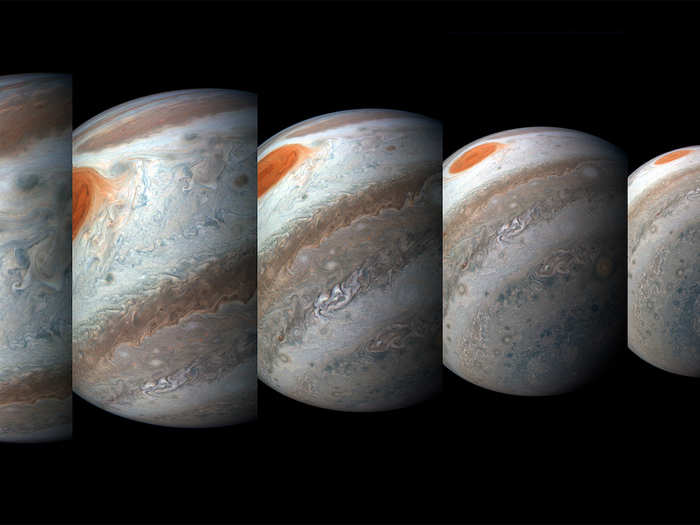
Juno beams the raw data to Earth as hazy black-and-white layers that represent red, blue, and green.
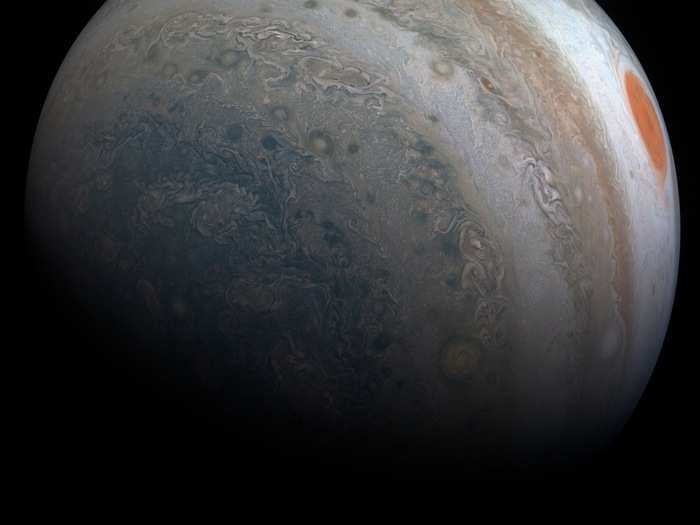
The layers can then be merged and processed into stunning planetary portraits, like this shot of Jupiter's north pole.
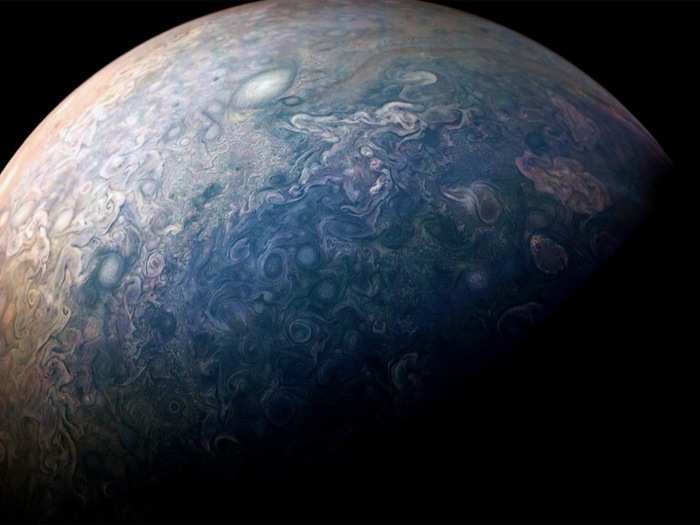
Juno last saw the Great Red Spot, which could easily contain planet Earth, in July 2017, during its seventh perijove.
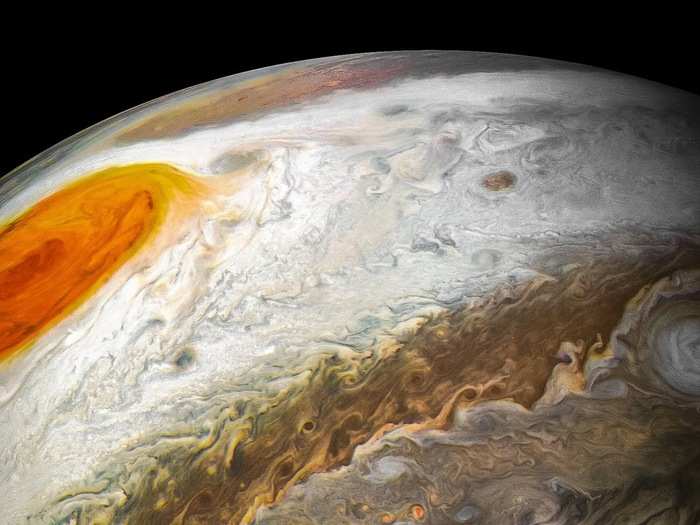
Source: Business Insider
While the probe didn't fly directly overhead this time, as it did last year, the latest images are nonetheless breathtaking.
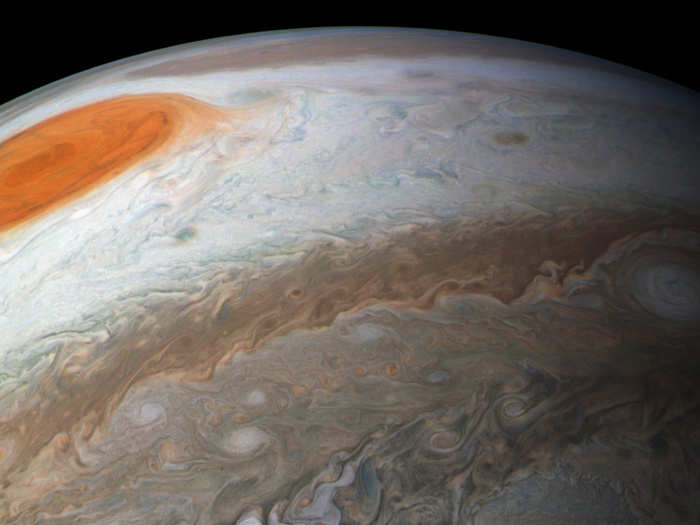
This one, processed by Doran, makes it look like Jupiter has an leering ruddy-red eye.
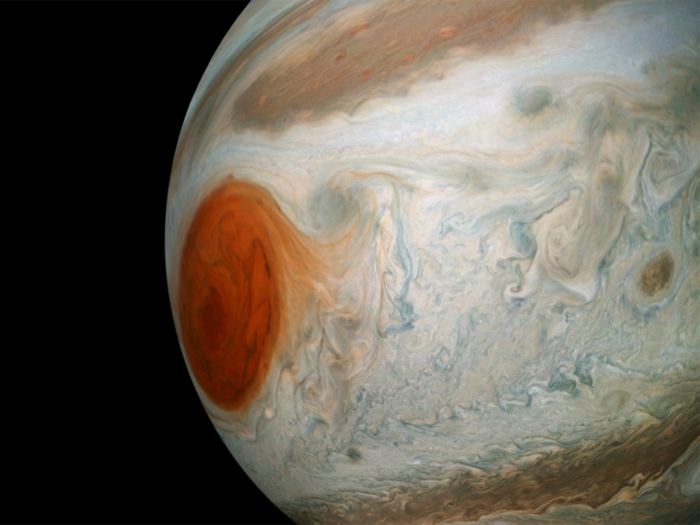
Smaller red storm cells are visible in a darker band near the Great Red Spot.
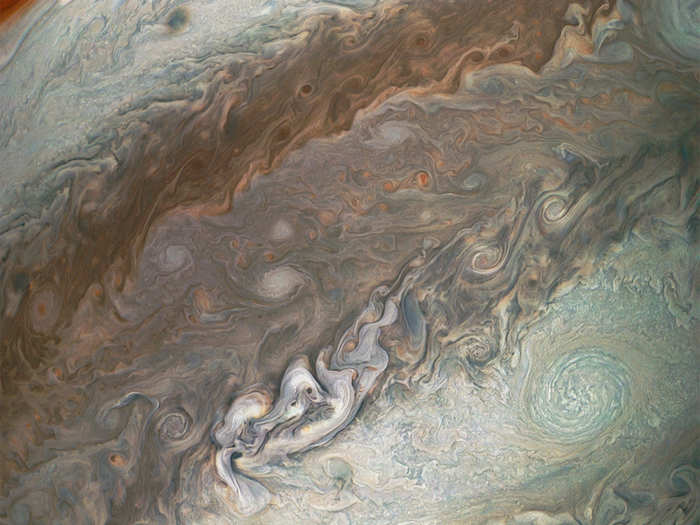
This wider-angle image, processed by NASA software engineer Kevin M. Gill, shows the small storms in more detail.
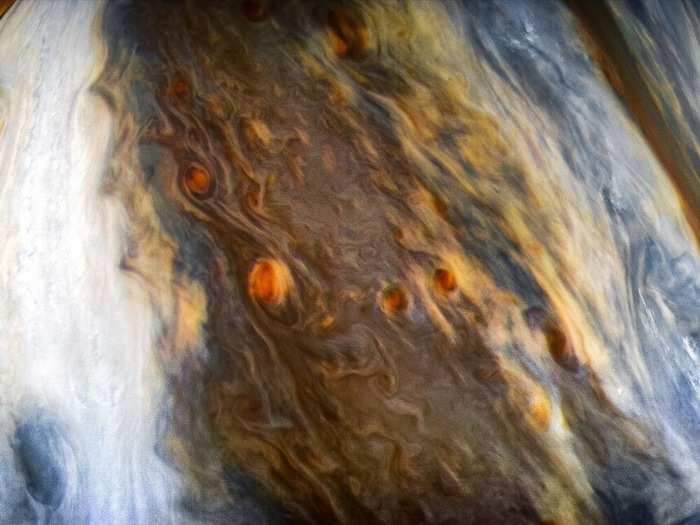
Gill also shared this image of a giant white storm on Jupiter, which NASA officially calls "anticylonic white oval WS-4."
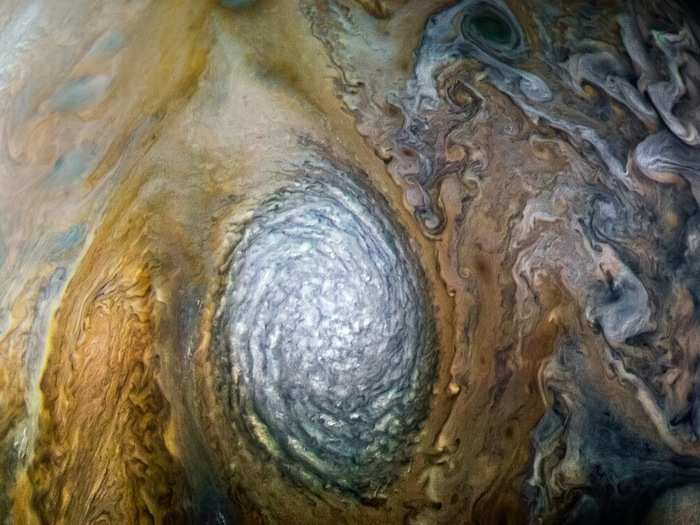
Here's the strange feature in more detail.
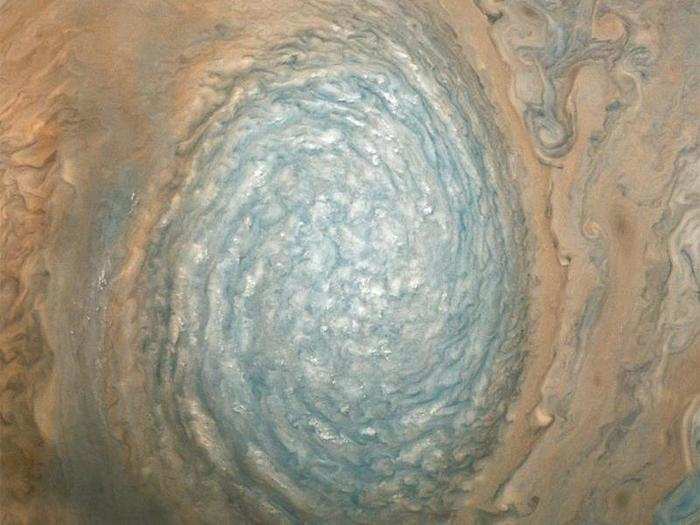
Other close-up photos show the mess of turbulence in clouds near the Great Red Spot.
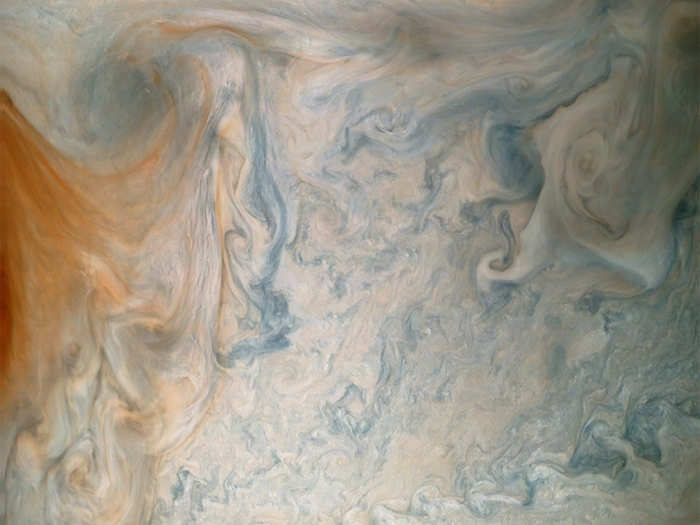
Near Jupiter's poles, the patterns of storms are especially wild.
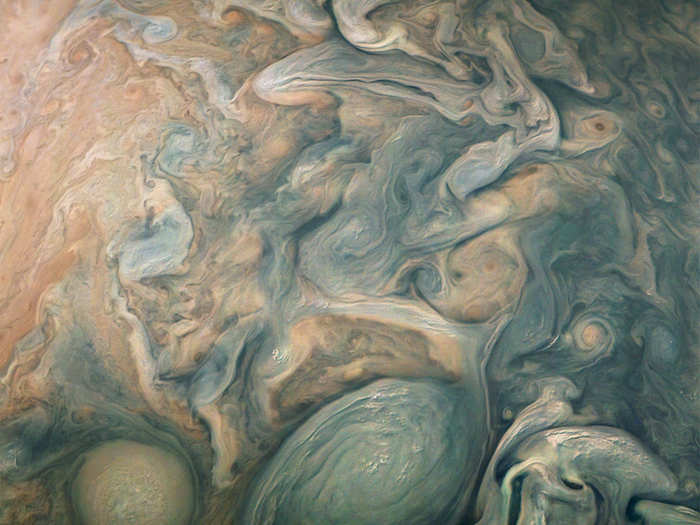
Chemicals like ammonia, which float high into Jupiter's cloud tops, help give many polar storms on the planet a blue-green hue.
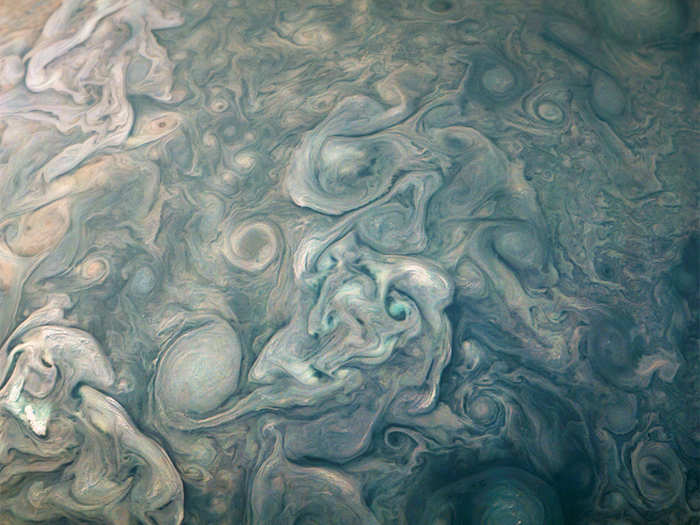
Source: Planetary Weather
The details of clouds captured by JunoCam during its closest approaches are equally mesmerizing.
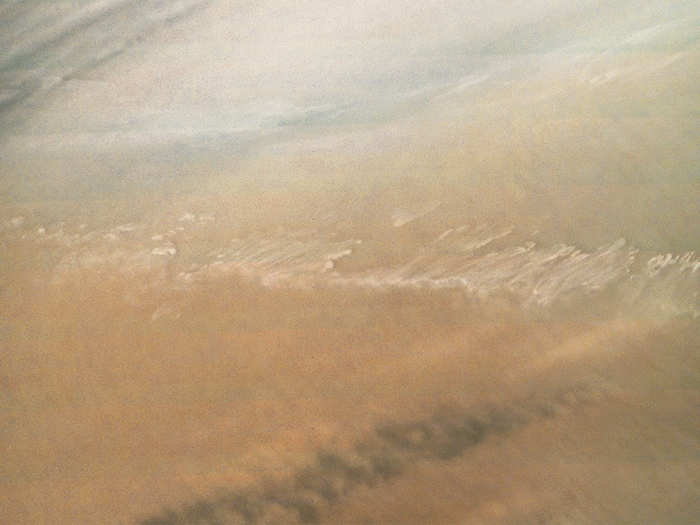
Juno passes within a few thousand miles of Jupiter's cloud tops during the closest approach of each perijove. During this maneuver, the probe reaches a speed of about 130,000 mph.
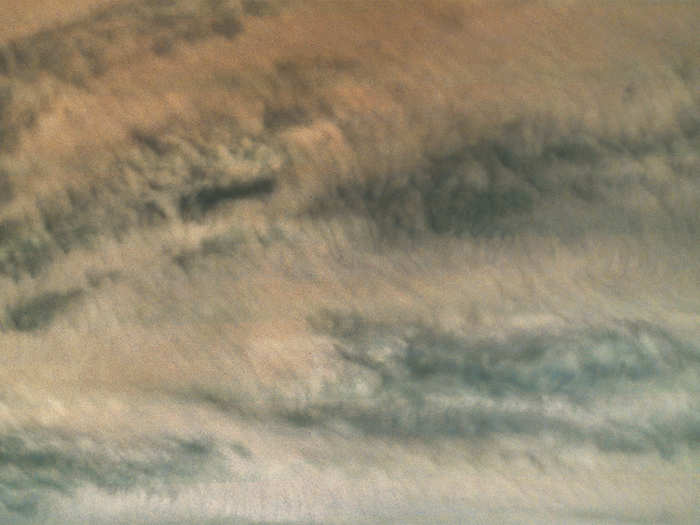
JunoCam takes several images of the regions it passes during each perijove. Doran and his collaborator Gerald Eichstädt recently figured out how to turn those series of photos into animations that show swirling, brewing storms over time.

They're learning other new tricks, too, and using them on older JunoCam data. This image shows how three separate photos of the Great Red Spot in July 2017 were stitched together.
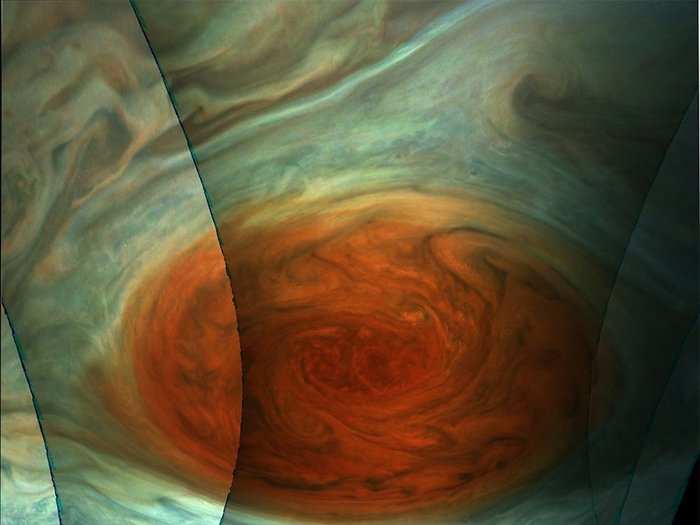
Doran said such composite images "afford us a wider and more complete view of certain regions on Jupiter than is possible with just one image."
Here's the finished, fully processed version of that image.
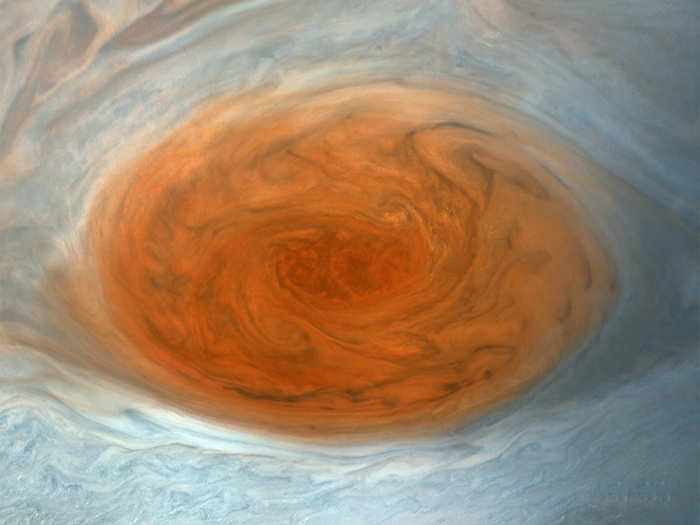
Björn Jónsson created this image of Jupiter's bizarre north pole using a combination of photos from Juno's first, third, fourth, and fifth perijoves. In addition to JunoCam data, he incorporated images from the probe's aurora-mapping instrument, called JIRAM.
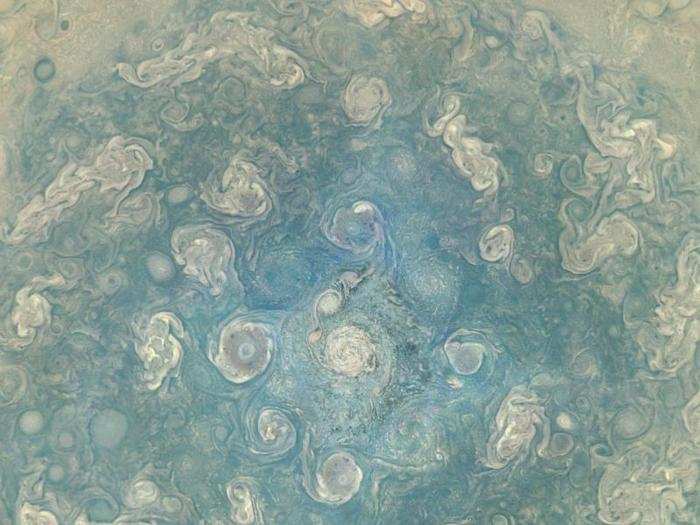
Juno's primary mission is slated to end after its 14th perijove, on July 16, 2018. However, NASA may extend the mission by two or three years, pending a review.
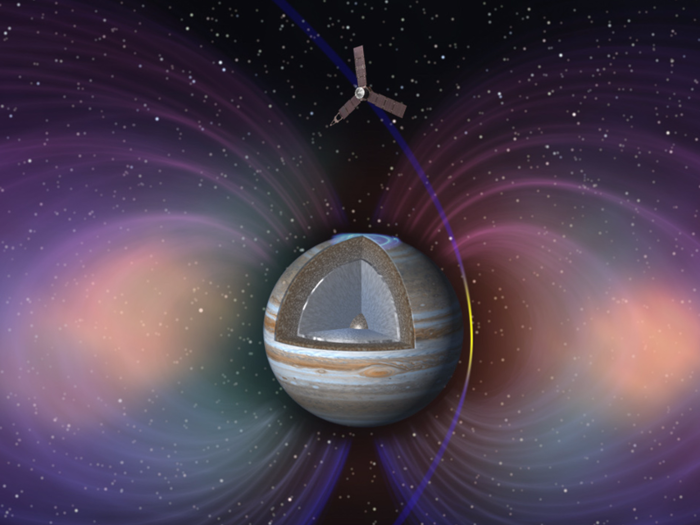
A representative for the Juno mission at NASA did not respond to Business Insider's questions about the plan for the probe after its last scheduled perijove.
However, NASA will ultimately destroy Juno by plunging into the clouds of Jupiter. The reason? The space agency doesn't want the probe to crash into the planet's icy moon Europa.
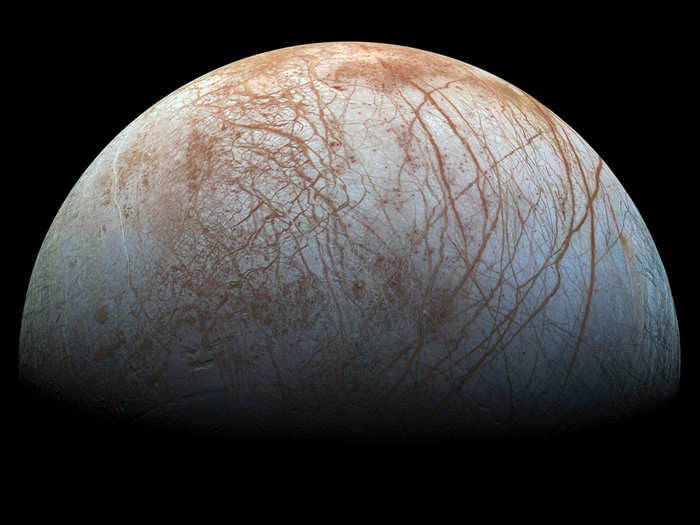
Source: Business Insider
Europa, and another icy moon called Ganymede, likely have oceans of liquid water — and possibly extraterrestrial life — beneath their surfaces.
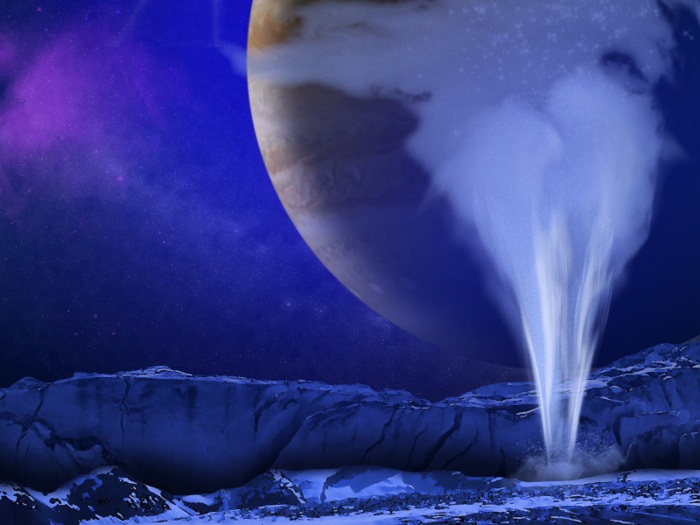
Source: Business Insider
NASA doesn't want to contaminate those oceans with bacteria from Earth that's stuck to Juno. In the future, though, it could send a super-sterile mission beneath the ice to search for aliens.
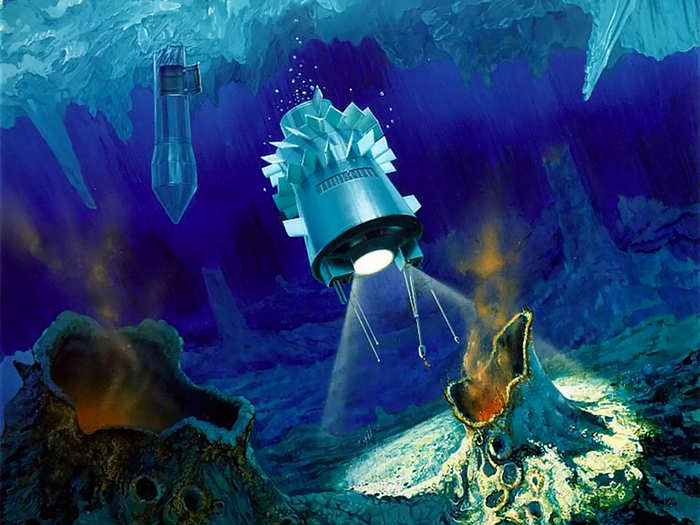
Popular Right Now
Advertisement